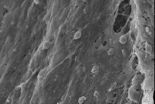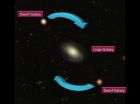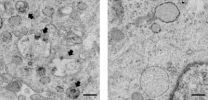(Press-News.org) Storm-triggered landslides cause loss of life, property damage, and landscape alterations. For instance, the remnants of Hurricane Camille in 1969 caused 109 deaths in central Virginia, after 600 mm of rain fell in mountainous terrain in 6 hours. More recently, on 8 August 2010, a rainstorm-induced landslide devastated the Chinese county of Zhouqu, causing more than 1000 deaths. A new modeling study by Ren (Geophysical Research Letters) examines the multiple factors, both natural and human caused, that came together to produce this event. The triad of storm-triggered landslides is geological condition, surface loading and vegetation roots, and extreme precipitation.
Extreme precipitation can be explained by three factors: low-level moisture buildup, conditional instability, and a lifting mechanism. When several factors (e.g., El Niño years, hurricane remnants, lifting mechanisms (e.g., orography, cold fronts, jets, and differential heating from land cover contrast), and weather pattern phase-lock) work in synergy in a region, extreme precipitation may occur.
Using a multiple-phase scalable and extensible geofluid model, the author considered geological features of the region, as well as an earthquake, drought, deforestation, and topsoil erosion before the triggering storm. Previously, drought conditions created cracks and crevices in the surface; these cracks and crevices were deepened by the 2008 M7.9 Wenchuan earthquake.
Another key factor in setting up the conditions for the landslide was human-induced deforestation and topsoil erosion, the study found. The results "underscore the urgency for a high priority program of re-vegetation of Zhouqu County, without which the region will remain exposed to future disastrous, progressive bulking type landslides," the author reports.
INFORMATION:
Examining the causes of a devastating debris flow
2014-07-21
ELSE PRESS RELEASES FROM THIS DATE:
New research links bad diet to loss of smell
2014-07-21
TALLAHASSEE, Fla. — Could stuffing yourself full of high-fat foods cause you to lose your sense of smell?
A new study from Florida State University neuroscientists says so, and it has researchers taking a closer look at how our diets could impact a whole range of human functions that were not traditionally considered when examining the impact of obesity.
"This opens up a lot of possibilities for obesity research," said Florida State University post-doctoral researcher Nicolas Thiebaud, who led the study examining how high-fat foods impacted smell.
Thiebaud led the ...
Study provides insights into birds' migration routes
2014-07-21
By tracking hybrids between songbird species, investigators have found that migration routes are under genetic control and could be preventing interbreeding. The research, which is published in Ecology Letters, was conducted using geolocators that, like GPS, record the position of a bird and allow its long distance movement to be tracked.
Compared with their parents, hybrids exhibited increased variability in their migratory routes: some used intermediate routes across less suitable areas, while others used the same routes as one parental group on fall migration and the ...
Motoneuron-like cell transplantation and GDNF delivery for repair of SCI
2014-07-21
Adipose-derived stem cells-transdifferentiated motoneurons after transplantation can integrate in the host cord. However, cell survival has been restricted by a lack of ideal environment for nerve cell growth. Taki Tiraihi, Shefa Neuroscience Research Center at Khatam Al-Anbia Hospital, Iran developed rat models of spinal cord injury (SCI) and injected adipose-derived stem cells-transdifferentiated motoneurons into the epicenter, rostral and caudal regions of the impact site and simultaneously transplanted glial cell line-derived neurotrophic factor (GDNF)-gelfoam complex ...
The development of blood-retinal barrier during astrocyte/vascular wall cell interaction
2014-07-21
There is evidence that astrocytes are closely related to the development and formation of retinal vessels. Dysfunction of astrocytes is an important cause of many retinal vascular disorders and blood-retinal barrier. Huanling Yao, Institute of Neurobiology, College of Life Science, Henan University, China, investigated development of the retinal vascular system and formation of the blood-retinal barrier in mice using immunofluorescence staining, gelatin-ink perfusion, and transmission electron microscopy. The development of the vasculature in the retina followed the rules ...
Using a novel scaffold to repair spinal cord injury
2014-07-21
Dr. Ning Yuan, Beijing Jishuitan Hospital, China and his colleagues, developed a novel neural stem cell scaffold that has two layers: the inner loose layer and the outer compact layer. The loose layer was infiltrated with a large amount of neural stem cells before it was transplanted in vivo. Thus a plenty of neural stem cells can be provided at the target spinal cord site. The loose layer was adhered to the injured side and the compact layer was placed against the lateral side. The compact layer has very small holes, so it can prevent ingrowth of adjacent scar tissue. ...
Using a deacetyl chitin conduit and short-term electrical stimulation for PNI
2014-07-21
Previous studies have demonstrated that deacetyl chitin conduit nerve bridging or electrical stimulation shows therapeutic effect on peripheral nerve injury (PNI). Dr. Peixun Zhang, Peking University People's Hospital, China and his team bridged the injured right rat sciatic nerve using a deacetyl chitin conduit combined with electrical stimulation (0.1 ms, 3 V, 20 Hz, for 1 hour). At 6 and 12 weeks after treatment, nerve conduction velocity, myelinated axon number, fiber diameter, axon diameter and the thickness of the myelin sheath in the stimulation group were better ...
Mysterious dance of dwarfs may force a cosmic rethink
2014-07-21
The discovery that many small galaxies throughout the universe do not 'swarm' around larger ones like bees do but 'dance' in orderly disc-shaped orbits is a challenge to our understanding of how the universe formed and evolved.
The finding, by an international team of astronomers, including Professor Geraint Lewis from the University of Sydney's School of Physics, has just been announced in Nature.
"Early in 2013 we announced our startling discovery that half of the dwarf galaxies surrounding the Andromeda Galaxy are orbiting it in an immense plane" said Professor ...
Study links enzyme to Alzheimer's disease
2014-07-21
Unclogging the body's protein disposal system may improve memory in patients with Alzheimer's disease (AD), according to a study from scientists at Kyungpook National University in Korea published in The Journal of Experimental Medicine.
In AD, various biochemical functions of brain cells go awry, leading to progressive neuronal damage and eventual memory loss. One example is the cellular disposal system, called autophagy, which is disrupted in patients with AD, causing the accumulation of toxic protein plaques characteristic of the disease. Jae-sung Bae and colleagues ...
Healing the heart with fat
2014-07-21
Too much dietary fat is bad for the heart, but the right kind of fat keeps the heart healthy, according to a paper published in The Journal of Experimental Medicine.
Unsaturated dietary fatty acids, such as eicosapentaenoic acid (EPA), are known to protect against cardiovascular diseases. However, the mechanism and the specific fat metabolites responsible for this protection were unknown.
A group of Japanese scientists now show that mice engineered to produce their own EPA are protected against heart disease and have improved cardiac function. One particular EPA metabolite, ...
When temperatures get cold, newly-discovered process helps fruit flies cope
2014-07-21
Cold-blooded animals cannot regulate their body temperature, so their cells are stressed when facing temperature extremes. Worse still, even at slightly colder temperatures, some biological processes in the cell are slowed down more than others, which should throw the cells' delicate chemical balance out of whack. Yet, those cells manage to keep their biological processes coordinated. Now researchers from the University of Rochester and the European Molecular Biology Laboratory have found out how they do that.
"The production of proteins is a key process in all cells, ...





